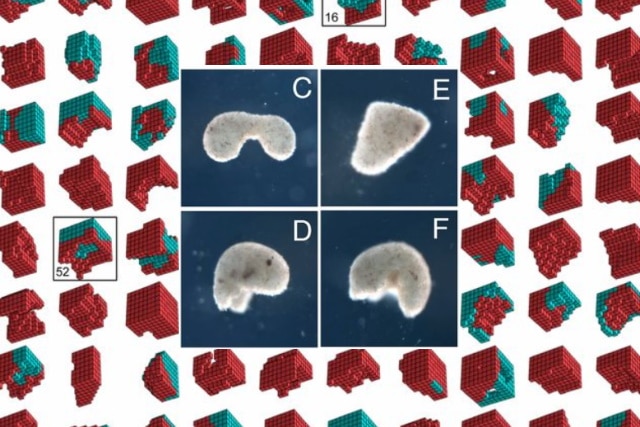Scientists use frog stem cells to create 'living, programmable organisms'

Visions of the future have long featured robots and cyborgs. We've seen robots, and even rudimentary human augmentation already, but now scientists have created the world's first living robots.
American researchers used cells from African clawed frogs to build biological machines from the ground up. Built from different biological tissues, scientists have brought into being "living, programmable organisms" and potentially opened up an ethical can of worms.
Researchers Sam Kriegman, Douglas Blackiston, Michael Levin and Josh Bongard explain their work in a paper entitled "A scalable pipeline for designing reconfigurable organisms" published in the Proceedings of the National Academy of Sciences. They say they have been able to use a cell-based construction toolkit to build living systems that has been designed using evolutionary algorithms.
In short, a computer generates various configurations of cells which are then let loose in a virtual environment. The designs that perform best are taken to the next stage and constructed from a collection of cells. Michael Levin, the director of the Allen Discovery Center at Tufts University in Medford, Massachusetts, says:
These are entirely new lifeforms. They have never before existed on Earth. They are living, programmable organisms.
To get an idea of what the team has been able to create, take a look at a video shared by the Guardian. It shows what have been named "xenobots", built by scientists at the University of Vermont and Tufts University:
The xenobots designs are made up of between 500 and 1,000 skin and heart cells, with the latter allowing for movement as the Guardian explains:
Because heart cells spontaneously contract and relax, they behave like miniature engines that drive the robots along until their energy reserves run out. The cells have enough fuel inside them for the robots to survive for a week to 10 days before keeling over.
Various practical usages for the xenobots have been proposed, including clearing human arteries, cleaning microplastics from the oceans and gathering radioactive waste.
Writing in the Proceedings of the National Academy of Science, the team says:
The behavioral competence of individual cells, and the propensity of cells to cooperate in groups, facilitate functional morphogenesis in novel circumstances. The lifeforms presented here, despite lacking nervous systems, following novel developmental trajectories, and being composed of materials from different tissues, nevertheless possess these self-organizing properties. These properties synergize with and support the behavior they were designed to exhibit. For instance, although signaling between cardiomyocytes was not enforced, emergent spontaneous coordination among the cardiac muscle cells produced coherent, phase-matched contractions which aided locomotion in the physically realized designs. Also, some of the designs, when combined, spontaneously and collectively aggregate detritus littered within their shared environment.
Using living tissue is often controversial, and in future work scientists may move towards using mammalian cells to allow robots to exist outside of water. But questions will be raised. As Thomas Douglas, a senior research fellow at the Oxford Uehiro Centre for Practical Ethics, posits:
There are interesting ethical questions about the moral status of these xenobots. At what point would they become beings with interests that ought to be protected? I think they’d acquire moral significance only if they included neural tissue that enabled some kind of mental life, such as the ability to experience pain.
He adds: "But some are more liberal about moral status. They think that all living creatures have interests that should be given some moral consideration. For these people, difficult questions could arise about whether these xenobots should be classified as living creatures or machines".